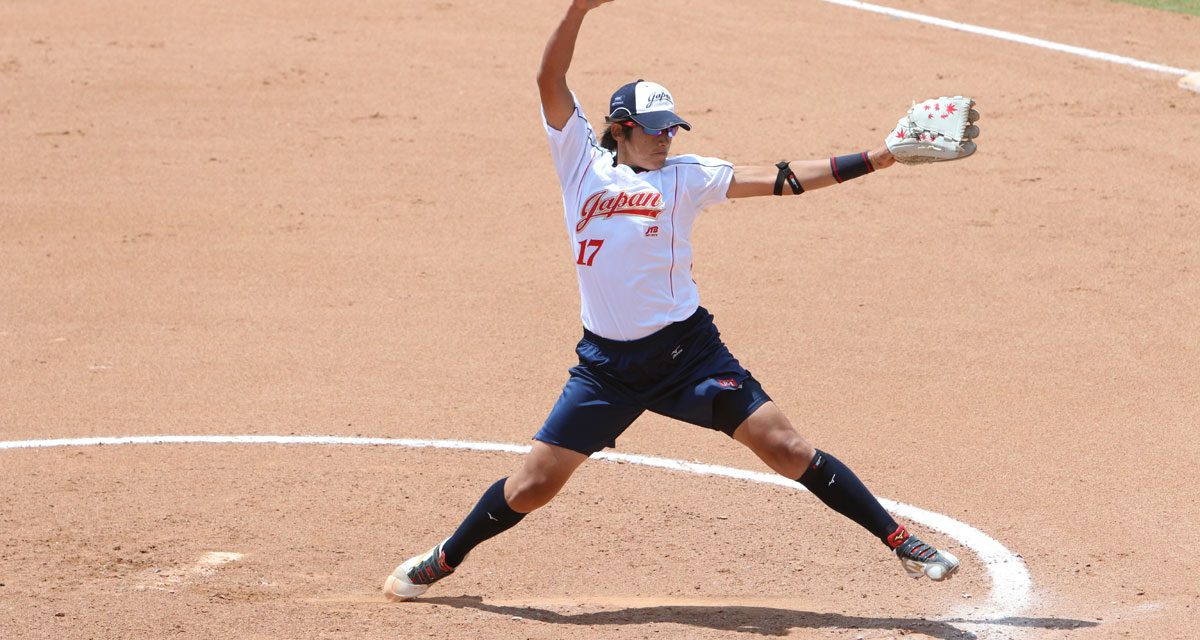Inconsistencies of Illegal Pitches in Softball

If you tuned into the USA Softball International Cup this past weekend, you may have noticed the pitchers getting away with things that at most levels would be considered illegal. This is because at the International level of play, pitchers are given free reigns and the pitching rules and regulations, or lack thereof, are different. If you tuned in this past weekend, you would have seen pitchers taking a step back off the rubber to build momentum before delivering their pitch. You may have also noticed pitchers stepping forward or sliding their lead foot forward, crow hopping, or re-planting as they delivered their pitch.
There were many young players/pitchers in the stands and whose eyes were glued to the TV this past weekend to watch the best players in the world take the stage. It’s important that these young players know and understand what illegal pitches are and how they are regulated among the different softball age levels.
Traveling/Club: These seasons often take place in the spring, summer, and fall months. In travel and club softball, umpires are trained to enforce and monitor illegal pitches. Softball pitchers at these levels must step on the rubber with their hands presented apart. This could be with the ball in their hand or the ball in their glove, however, the hands must be apart when the pitcher takes the sign from the catcher. The pitcher must also start with both feet on the rubber and keep the back toe on the ground throughout the pitch until the ball is released.
High School: The high school pitching rules are different at this level than those of traveling and club ball. The most significant difference is that pitchers are allowed to start with their back foot behind the rubber. They are also allowed to start with both feet on the rubber and then take a step back with their back foot to aid in the push off. Similar to what the pitchers in the International Cup this past weekend were doing. Also at the high school level, staying in the pitching lane begins to be enforced, this is preparing the pitchers for college-level officiating. Pitchers at the high school level must also keep their back drag toe on the ground until the ball is released.
College: At the college level, both feet must be connected to the rubber when the pitcher takes the mound. The pitcher must step on and take the sign from the catcher with her hands apart. Pitchers are not allowed to leap, crow-hop, or replant at this level and will often be called by a field umpire for any illegal pitch that takes place. College pitchers are also required to stay within the pitching lane, which is painted or outlined in chalk on the field.
Professional: The same rules apply at the Professional level as at the college level. At the Pro level, there are three umpires on the field at all times monitoring the pitcher every single pitch. The players who play Internationally during the Pro off-season months will typically need to adjust their pitching habits when they return to the States to honor the rules.
International: Pitchers can get away with much more at this level. Pitchers can step back off the rubber before or during the presentation of their pitch. They are also allowed to step forward as long as the back of their foot remains above the pitching mound. Pitchers are also allowed to leap, crow-hop, and re-plant while delivering their pitch. You will notice that pitchers, even the shorter ones, can get to the edge or outside of the pitching circle. This gives the pitcher a huge advantage, and it cuts down the reaction time for the hitter in the box.
Are these pitching rule inconsistencies helping or hurting upcoming pitchers? Pitching rules and regulations are different at almost every level of play. Pitchers who step back off the rubber in high school ball have to make a conscious effort not to when they reach travel/club ball in the summer months and this adjustment often throws off timing. Why are some college pitchers called for leaping, crow-hopping, and re-planting, while others are not? Is there something that can be done by the rules committee to better regulate and enforce the rules or would it be best just to eliminate the rules entirely and adapt to those of International play?
It’s important that coaches and pitching coaches at all levels learn and know the rules for their pitchers to follow. If a pitcher is called for an illegal pitch during a game, it’s the coaches job to call time and ask the umpire for clarification and to make sure the pitcher understands what she did wrong. Then the pitcher will be able to practice making the adjustment the next time she practices or has a pitching lesson with a private coach. Until the rules at each level become consistent with one another, coaches and pitchers will need to adjust if an illegal pitch is called.





